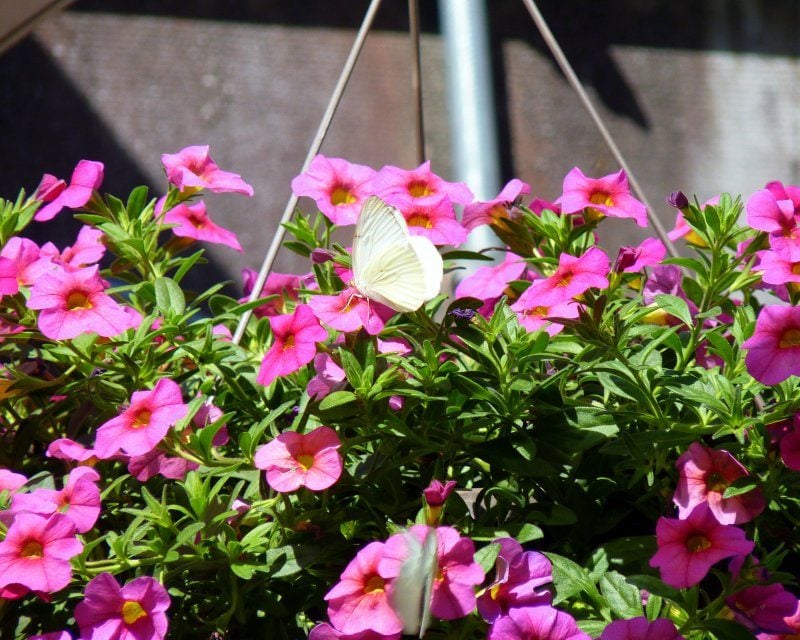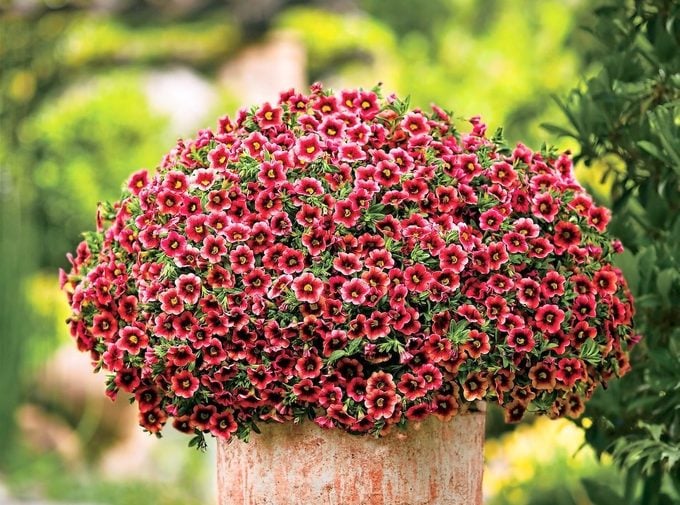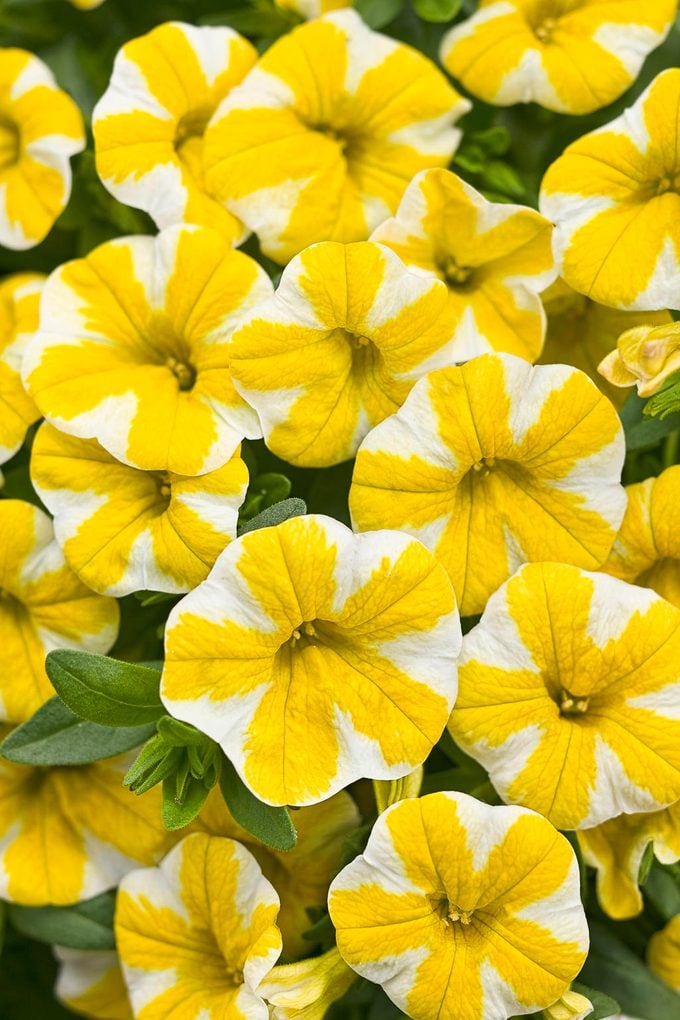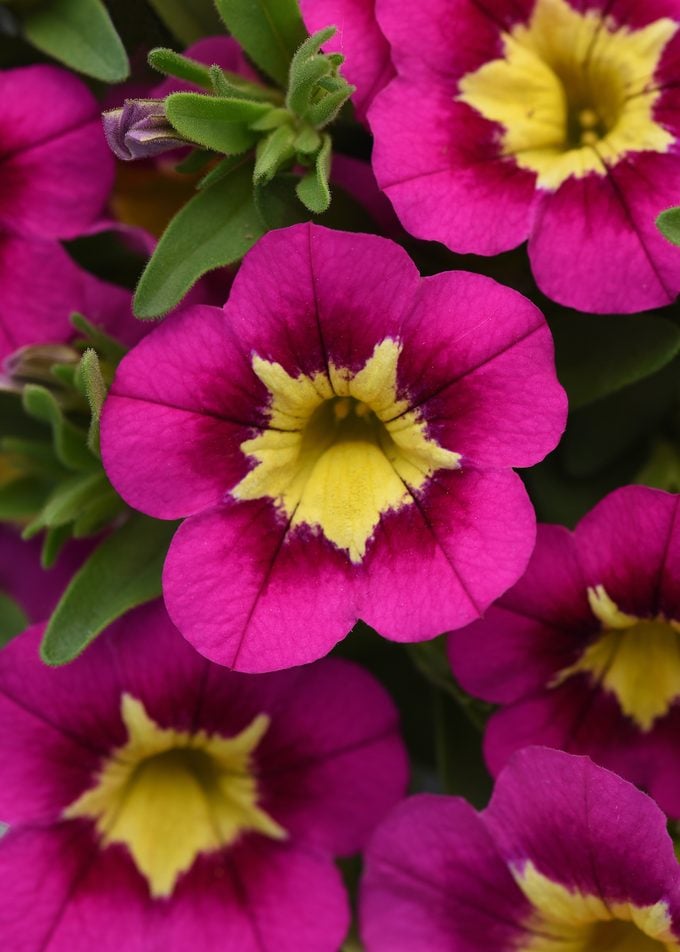Grow Calibrachoa for Baskets, Borders and Butterflies
Updated: Jun. 21, 2023
Fill containers with calibrachoa flowers, also known as Million Bells or Superbells. Learn why gardeners love growing these "mini petunias."
When I saw my first Million Bells plant (Calibrachoa) in a local plant nursery a few years ago, I immediately fell in love. The tiny petunia-like blossoms were brilliantly-colored and unbelievably numerous. The plant tag promised easy care and no deadheading. I scooped up several colors and happily took them home, eager to see them in my own garden—and I wasn’t disappointed. I loved their color and spreading habit, and was very pleasantly surprised when they turned out to be a butterfly magnet!
Check out the top 10 fast-growing annual flowers for instant flower power.
Calibrachoa Care and Growing Tips

- Million Bells or Superbells
- Calibrachoa
- Zones 9 to 11 or Annual
- Full Sun to part sun
- Moist Soil
- Attracts: butterflies, bees
Million Bells is the commercial name for Calibrachoa, a genus of plants closely related to petunias. They are also sold as Superbells and Mini-Petunias. They are all hybrids of a species of Calibrachoa native to South America. Most are patented and trademarked by the companies that produce and grow them.
Though they tolerate some frost and are considered hardy (or tender perennials) in zones 9 to 11, most people grow Calibrachoa as an annual. In warmer zones, grow it in the cooler seasons, fall through spring. They tolerate more heat than petunias, but usually can’t outlast a Deep South summer.
In northern zones, plant them outside after the last frost. Expect top performance with non-stop blooms all summer and into fall. Choose sunny areas, or those with afternoon shade in warmer climates. As a self-cleaning plant, calibrachoa’s flowers will naturally fall off, so no deadheading is necessary.

Though not terribly picky, these plants do like regular watering. However, they can’t tolerate soggy soil. Because of the abundance of blooms, regular fertilizing is the key to success. They grow only about 6 to 12 inches tall, but spread up t0 24 inches.
One particularly nice way to enjoy these blooms is in hanging baskets on shepherd’s hooks in your butterfly garden. This brings the flowers to eye-level where you can get the best view of the butterflies enjoying them!
Add annual vinca flowers to your gardens and containers.
Calibrachoa Colors and Cultivars

These container favorites are available in dozens of colors. If you’re looking for new and interesting color combinations you may not find at your local nursery, try ordering plants from catalogs and online growers. There are also double-bloom versions.
I’m particularly drawn to a cultivar called ‘Lemon Slice.’ The yellow and white stripes make for some of the most cheerful blooms I’ve ever seen! Also look for Superbells Tropical Sunrise, which has streaks of yellow, pink and red on each flower.

‘Bumble Bee Hot Pink’ Calibrachoa (Calibrachoa ‘Balumotink’) is irresistible to bees and other pollinators and continuously bursts with 1-inch blossoms throughout the summer months. The vibrant bicolor hot pink blooms have yellow centers. The trailing growth habit makes it perfect in hanging baskets.
For more gardening tips, sign up for our free newsletter.
